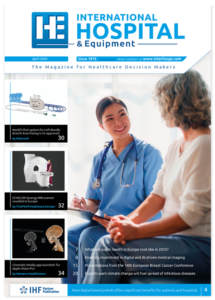Disrupting hospital chaos: Real-Time data and the future of hospital operations

Melinda Yormick
Healthcare technology strategist Melinda Yormick explores how real-time data integration represents a critical breakthrough in hospital operational efficiency. Her analysis reveals how precision operations – enabled by automated workflow monitoring and live analytics – could transform fragmented healthcare systems into coordinated, responsive care environments, fundamentally improving patient outcomes and resource allocation across critical departments.
In the modern hospital environment, the gap between technological possibility and daily reality is often wider than it should be. Many healthcare facilities continue to rely on systems that feel stuck in the past – pagers, fax machines, broadcast systems, and pneumatic tubes. For those who work closely with hospitals, it is easy to question why change is so slow, but the reasons are far more nuanced than simple resistance to innovation.
Change in a hospital is rarely as straightforward as flipping a switch. There is a web of regulatory requirements, infection control protocols, and privacy concerns to manage at every step. The cognitive and financial burden of switching to new systems is real, and it is often underestimated by those outside the hospital setting. For hospital leaders, every decision about technology must be weighed against its potential impact on patient care, staff productivity, and the bottom line. Financial stewardship is not just a buzzword; it is a necessity. Hospitals must be sure that any new investment will deliver real value, whether in productivity, patient outcomes, or both.
Patient care remains the top priority. Every workflow in a hospital is connected to another, and any change can ripple across departments. Before anything new is introduced, hospitals must be confident that it will not disrupt care or introduce new risks. That caution is understandable, but it also raises a question: at what point does caution start to hold progress back?
One of the biggest challenges with outdated systems is the lack of real-time information. When hospital staff cannot see what is happening as it happens, it is hard to make informed decisions. Staff can spend significant time searching for equipment or trying to track down information, and that time adds up. It is not just about the minutes lost – it is about the frustration and the sense that things could be running more smoothly if only there was better visibility into what is going on. Ambiguity creates blind spots in clinical, operational, and financial management, making it difficult to identify opportunities for improvement or to respond quickly to emerging issues.
The real value of digital transformation lies in its ability to bring real-time elements into hospital operations. When staff have access to just-in-time data about where equipment is, who is available, and what is happening across the facility, they can make better decisions and respond more quickly to changing needs. It is about closing the information loop and giving people the tools they need to do their jobs effectively.
Ultimately, the decision to invest in new technology comes down to a simple question: does the benefit outweigh the risk? Hospitals must consider whether they are at a competitive disadvantage by not acting, what the opportunity costs of inaction are, and whether the current system is putting unnecessary strain on staff and patients. When the benefits of real-time data and improved accountability tip the ratio, the case for change becomes much stronger.
The lack of real-time information in healthcare systems is not just a technical issue – it is a barrier to better operations, better decision-making, and better outcomes. By embracing digital transformation and the power of real-time data, hospitals can empower their teams, streamline workflows, and deliver the seamless care that patients and staff deserve.
Real-Time workflow information and precision coordination enable hospitals to deliver better care
A truly accountable healthcare system demands full visibility into processes, including a reliable, accurate record of care. To achieve this, hospitals need automated, real-time information that reflects the true state of their operations. While precision medicine is widely recognized for its ability to deliver targeted, individualized treatment, the concept of precision operations is equally important. Precision operations represent the digital transformation of frontline healthcare, ensuring that every process is as efficient and effective as possible.
Real-time workflow information is the foundation of this transformation. When clinicians have access to up-to-the-minute data, they can quickly locate the people and resources they need, streamlining workflows and reducing unnecessary delays. This level of visibility supports efficient processes across the entire care journey, from admission to discharge. It also enables the orchestration of event response, eliminating the inefficiencies of the “telephone game” that often plagues critical and standard care events alike. For clinicians, this means less time spent on coordination and more time at the bedside, where it matters most.
The benefits extend beyond the clinical team. For managers, real-time information unlocks live workflow analytics, cost visibility, and data-backed justification for process changes. These insights allow for more informed decision-making and continuous improvement. For hospital executives, the impact is even more significant. Access to real-time data translates into margin recovery, improved throughput, and fewer missed opportunities in the most financially critical areas of the enterprise.
Automation plays a crucial role in making this vision a reality. By automating the capture and communication of workflow information, hospitals can ensure that every action is recorded, and every process is transparent. This not only reduces the risk of manual errors but also frees staff to focus on higher-value activities. With the right systems in place, hospitals can dynamically allocate resources, prioritize tasks, and respond to events as they happen, all without the need for manual intervention.
When an entire workforce is able to find and access people and resources more efficiently, response times improve across the board – whether it’s an emergency situation or a routine throughput activity. Real-time information means that actions can be taken immediately, with less waiting and less confusion. These insights provide a comprehensive view of operations, revealing not only what is happening but also why, and how to improve it. Time-driven activity-based costing for resource allocation helps identify opportunities for staffing and room optimization, while also surfacing bottlenecks that might otherwise go unnoticed. This level of detail enables more accurate financial planning, better capital allocation, and smarter facility design based on real-world usage.
In summary, when deployed holistically, real-time information transforms daily friction into actionable data. It equips decision makers at every level to lead, optimize, and grow with confidence. By embracing automation and orchestration as natural extensions of real-time workflow management, hospitals can reduce response times, improve care delivery, and optimize resource allocation across critical departments, ultimately delivering better outcomes for patients, staff, and the organization as a whole.
About the author
Melinda Yormick is the Co-Founder and CEO of CLARA. Her clinical and leadership background has positioned her as a healthcare technology strategist and thought leader focused on digital transformation and operational excellence in hospital environments. Melinda has spent the last 13 years advancing her career in healthcare and after a firsthand experience with unnecessary patient death, resulting from a lack of digital transformation, she is dedicating the rest of her career to advancing healthcare through right-time technology. For more information, visit https://www.claraguide.com/.

